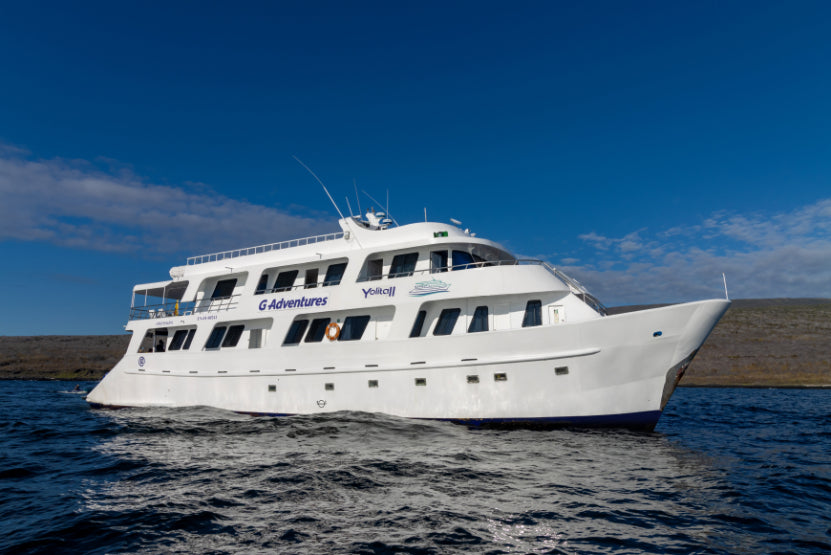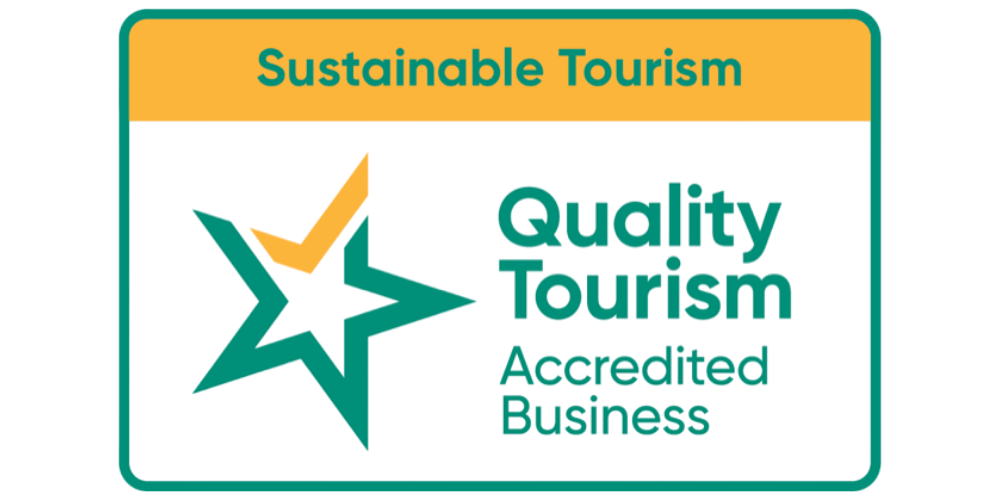Turtles at Breakfast, Boobies by Lunch: How Small Ships Win the Galápagos Day
First light, and the sea is the colour of a hush. You’re on deck with coffee when a green turtle surfaces—one perfect exhale, a ripple, gone. Ten minutes later the pangas are in the water and your small group glides toward a black-lava landing, frigatebirds sketching loops overhead. By mid-morning you’ve stepped around sleepy marine iguanas, watched Sally Lightfoots tap-dance across rock, and eased into a cove where a sea lion pup considers you a mildly interesting bubble machine. You’re back aboard in time for fruit and eggs. It’s not bragging—this is just how the rhythm works when the ship is small and the windows are big.
If that sounds like your tempo, this small-ship expedition is built around exactly those windows: early wildlife, easy landings, and guides who run on tide charts instead of wishful thinking.

Why “Small Ship” Changes Everything
In the Galápagos, timing and group size aren’t luxuries; they’re the levers. Fewer cabins mean fewer moving parts at landing time, more flexibility with site rotations, and a quieter footprint on trails and reefs. Where bigger boats must stage landings in waves, small ships slip you ashore while the light’s still soft and the iguanas still own the path. You notice it most in the silence—briefings you can actually hear, a zodiac where your camera has room to breathe, and a guide who remembers your fin size without asking.
A Day That Breathes (and Doubles Your Wild Moments)
Dawn: Pangas out before the heat wakes the rocks. Dry landing on lava. Blue-footed boobies warming up on the headland, lava lizards claiming their sun patches.
Late morning: Wet landing to a sandy crescent. Snorkel brief, gentle entry, turtles commuting like they’ve got meetings. Sea lions do the comedy; you practice relaxed buoyancy and grinning through your snorkel.
Midday: Back aboard for lunch and a shade-siesta while the ship repositions. Shoelaces dry on the rail, memory cards exhale.
Afternoon: Second site. Maybe a mangrove labyrinth with rays like drifting punctuation. Maybe a highland walk among giant tortoises who look like time with a shell.
Golden hour: Short ride back as boobies arrow into bait balls, deck quiet except for people failing (happily) to find better adjectives than “wow.”
Prefer your days to unfurl like that without you juggling clipboards? The island-hopping routes take the stress out of timing so you can focus on the fun bits—like deciding whether today’s favourite is turtles or boobies.
Landings Without Drama
-
Wet vs dry: Small vessels can sequence a wet landing first—when sand is empty and shadows are long—then pivot to a dry landing where rock heat would’ve been brutal at noon.
-
Zodiac flow: A dozen people load in minutes, not rounds. That’s the difference between “we had the cove to ourselves” and “we had good company with three other groups.”
-
Trail etiquette: Your guide sets the pace; you keep a respectful bubble. Fewer humans = calmer wildlife and cleaner photo frames.

Snorkel Confidence (Even If You’re Not a Fish)
You don’t need to be a hardcore diver to have a marine-life day of days. With a small group, briefings are clear, entries are unhurried, and someone actually watches your first moments to check mask seals and fin straps. Stay horizontal, let the current write the paragraph, and turn slowly when a sea lion zips past so you don’t look like an underwater windmill. Turtles appreciate your lack of thrash; so do your calves.
Boobies by Lunch: Reading the Cliffs
Blue-footed boobies aren’t shy about their calendar. Late morning is often when plunge-diving turns cinematic—one wingbeat, a folded spear, a clean stitch into the sea. With a smaller group, you’re where you need to be without elbow jousting, and you can spend ten quiet minutes learning a single bird’s rhythm instead of hunting for space. It’s not just better viewing; it’s better being there.
The Between-Times Are the Secret Sauce
A small ship doesn’t crowd the spaces in between. That’s where you trade lens tips, rehydrate like a champion, and watch petrels skim the bow. Crew remember your tea order; your guide pulls out a chart and turns tomorrow into a neat string of possibilities. The archipelago feels less like a schedule and more like a conversation you’ve been invited to join.
Pack Light, See Heavy
-
Mask that fits (borrowable on board, but your own never lies).
-
Reef-safe sunscreen & long-sleeve rashie so you can linger without crisping.
-
Simple lens duo: one wide for landscapes and decks, one short tele for wildlife without losing habitat.
-
Dry bag & quick-clip for zodiac hops.
-
Light shoes with grip for lava and boardwalks; your ankles will write thank-you notes.
Quiet Habits That Multiply Wildlife Moments
-
Early to the panga. Five minutes early is better than five metres closer later.
-
Eyes up, not just lens down. Behaviour beats proximity every time.
-
Patience pact. Agree to give any single moment a full minute before moving on; the good stuff often arrives at 59 seconds.
-
Trail whispers, water grace. Less noise equals more natural scenes.

Choosing the Right Length (Without Guesswork)
Seven days gets you the classic loop with zero filler. Ten days adds remote corners and snorkels that feel like new chapters, not repeats. Seventeen days is the full naturalist dream, with space to breathe between headline moments. Pick the depth that matches your energy; let the ship handle the weave. If you want an easy on-ramp to any of those arcs, the Galápagos small-ship journey lays out dates and routes without the research spiral.
Breakfast turtles, lunchtime boobies, stargazing on deck.
That’s the promise of scale done right. Keep the vessel small, the groups smaller, and the days shaped around the moments the islands were always going to give you. Your job is simple: show up with curiosity, and leave room for wonder.





